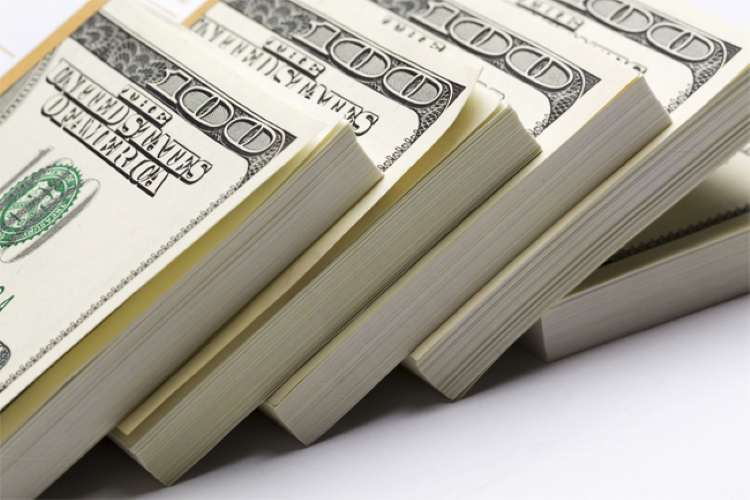
The Indian rupee has come under renewed pressure amid rising global uncertainties, slipping to a five-month low of 87.74 against the dollar on Thursday. The immediate trigger was US President Donald Trump’s threat to impose a 25% tariff on Indian exports, adding to investor jitters. While the Reserve Bank of India intervened to curb the fall, the short-term outlook for the rupee remains weak. On Friday, the rupee recovered modestly, closing at 87.30, aided by central bank intervention and short-covering. Currency traders expect a continued depreciation bias, driven by steep tariff risks and persistent portfolio outflows.
In July alone, the rupee declined 2%, approaching its all-time low of 87.95 reached in February. The currency has lost over 3% since the beginning of the year, making it one of the worst-performing Asian units. The rupee ended July at 87.58, compared to 85.60 on July 1. With global forces still favouring a strong dollar, the rupee may have further ground to lose.
READ I India must counter US tariffs with market diversification
Rupee hit by Trump tariffs
The outlook worsened after President Trump warned of possible penalties on India’s oil and arms purchases from Russia. The comments triggered a sell-off in equity markets, reflecting growing concerns about the fallout on trade and capital flows.
Analysts estimate that high tariffs could shave off up to 40 basis points from India’s GDP growth in 2025–26. While there is room for India to negotiate lower duties, the direction of the rupee and equity markets will depend on whether a US-India trade agreement is eventually reached, said Michael Wan, Senior Currency Analyst at MUFG, in a client note.
RBI intervention and market sentiment
The RBI is expected to continue smoothing out rupee volatility but may avoid aggressively defending any specific level. According to Finrex Treasury Advisors, the central bank has been moderating fluctuations, especially as oil companies ramp up dollar purchases ahead of the US deadline on Russian crude imports.
Currency traders remain wary of further depreciation, especially as imported goods become more expensive and strain the current account. Economists caution that the trade gap could widen if global oil prices rise or if foreign capital outflows persist.
Foreign investors on exit mode
Beyond tariff concerns, trade uncertainty has also clouded investor sentiment. Foreign portfolio investors (FPIs) pulled over $600 million from Indian equities this week alone. With other Asian markets, especially North Asia, still commanding attention, India will need more than a headline trade agreement to lure back global capital. The lack of clarity on trade policy, coupled with geopolitical risks, has made investors cautious.
Adding to the pressure, dollar-rupee forward premiums slipped as traders lowered expectations of US Federal Reserve rate cuts. State-owned banks were also seen executing buy/sell swaps in mid- to long-tenure contracts, dampening forward rates further.
Regional currencies also struggle
The rupee’s slide is part of a broader trend in Asian currencies. On Thursday, most regional peers fell between 0.1% and 0.5%. The dollar, buoyed by reduced hopes of a Fed rate cut in September, held strong near the 100 mark on the DXY index—its highest level in two months.
If the rupee’s decline persists, India’s oil import bill could swell, worsening the external balance. While India posted a current account surplus of 1.3% of GDP in the fourth quarter of FY25, up from 0.5% a year earlier, that position may be hard to maintain if oil prices rise or export growth falters.
Sanctions and trade deal uncertainty
Complicating matters further, the US has sanctioned six Indian companies for alleged purchases of Iranian petroleum and petrochemical products. It has also warned of penalties on crude imports from Russia. These actions are raising the stakes for New Delhi, which is hoping for a breakthrough in trade negotiations with Washington.
The rupee is now inching close to the psychological barrier of 88. While the RBI is expected to manage volatility, analysts forecast the USD/INR pair to stay in the 85–87 range by end-FY26. This is based on assumptions of a slightly weaker dollar, a stronger Chinese yuan, and India’s relatively stable current account.
Market participants are now looking to the RBI’s upcoming monetary policy meeting. The central bank is widely expected to hold interest rates steady. But the tone of its policy statement could sway markets. A cautious and assertive stance may offer support to the rupee, while a dovish signal could trigger further depreciation.
As global and domestic risks converge, the rupee’s trajectory will be shaped not just by trade outcomes, but also by the interplay of oil prices, foreign capital flows, and central bank actions on both sides of the globe.
